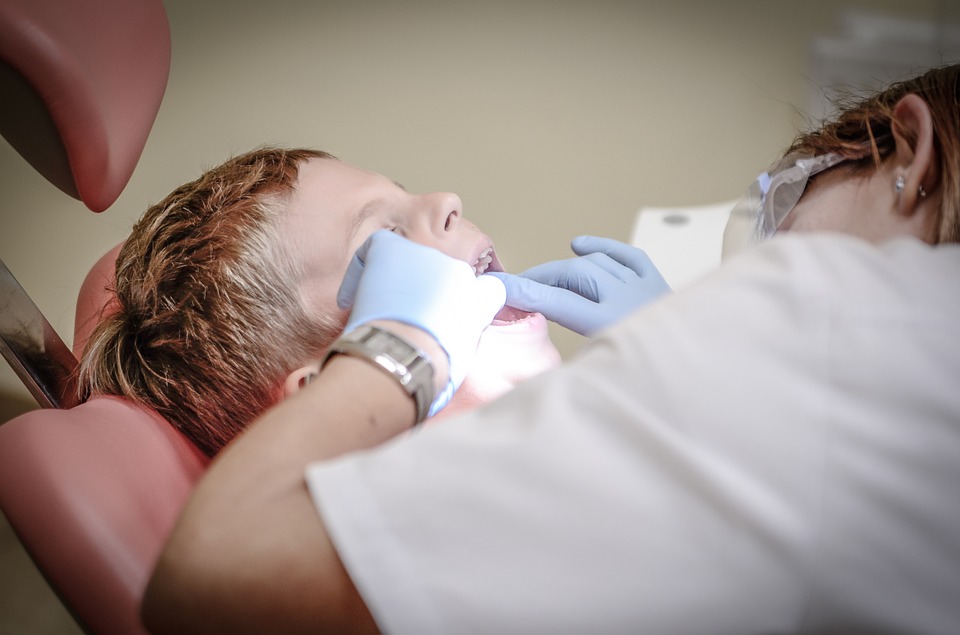The Pediatric Dentistry is one who is responsible for addressing the dental needs of infants and children.
In this sense we must talk about the importance of maintaining good oral health among the smallest and is that the temporary teeth have a very important work both aesthetically and functionally.
Just as we must not forget that the proper eruption of permanent teeth will be directly related to the good condition of the so-called milk teeth.
Next we will know the common dental treatments in Pediatric Dentistry to have more information about these interventions that are mainly designed for prevention work.
What are the most common treatments in pediatric dentistry?
Pediatric dentistry is the specialization of dentistry responsible for treating children from birth. The early detection of dental and maxillary anomalies is essential for the little ones to have good oral and dental health in the future, as adults.
We explain everything about this specialty and its most common treatments in Odontopediatria. The most common child dental treatments are:
Hygiene, fissure sealing, and fluoride application
The child’s dental hygiene or prophylaxis and cleaning instructions (brushing) is a treatment that we indicated at the Prop dental Clinics in Barcelona and Madrid to remove tartar on the child’s teeth. The prophylaxis is treated with clinical hygiene and with this treatment the tartar that causes cavities, bad breath, inflammation of the gums, will be eliminated…
Like adults and even if parents maintain the correct oral hygiene of the children with brushing after each meal, they should perform clinical prophylaxis at least once a year from a clinic like align beauty orthodontics. The elimination of tartar is essential for proper oral and dental health.
Fissure sealing. Sealants are materials used in children’s dentistry that aim to soften the anatomy of the crushing surfaces of molars and premolars as well as the grooves and fissures of the canines and incisors where the removal of bacterial plaque is very complex which makes them surfaces very prone to decay, especially the first years after the rash.
The fluoride topology in pediatric dentistry is a simple procedure that does not bother children.
First, a gentle cleaning of the surface of the teeth is performed and then the fluoride gel is applied for 1 minute, after this, the child will not be able to eat any food or drink water for 40 minutes, so that its action is more intense.
The application of fluoride in deciduous teeth or teeth is complementary to the placement of pit and fissure sealants because while fluoride acts to protect smooth dental surfaces, the sealants are introduced into the crevices called pits and fissures, to prevent remains of food and bacteria penetrate them, caring the enamel.
Caries in children
In children, the treatment of dental caries is performed by the pediatric dentist when there is mineral loss of the tooth surface (in milk teeth or permanent teeth) whose sign is the localized destruction of the hard tissue of the tooth.
Caries in children (milk teeth) is treated as in adults (permanent teeth).
Dental caries in children is treated by limiting the decayed tissue and reconstructing with a composite of the same color of the tooth, remaining totally aesthetic and thus returning the form and function of the tooth.
Dental caries affects milk teeth as well as definitive teeth, children and adults alike.
It is an infectious, contagious and multifactorial pathology that will cause the destruction of dental tissue and may cause premature loss of the tooth.
The acids caused by the bacterial plaque will cause de-mineralization of the tooth enamel, thus initiating caries. Therefore it is extremely important that children maintain proper oral-dental hygiene.
If caries affects only the dental structure without affecting the pulp or nerve, the treatment to be performed will be a filling or reconstruction. If the caries lesion affects the dental pulp or nerve, a pulpotomy or pulpectomy should be performed.
Dental caries will be avoided by maintaining correct oral and dental hygiene habits and also, by performing periodic check-ups at the dental office.
Pulpotomy and pulpectomy in children
The endodontic in odontopediatrics refers to pulp treatment nerve: pulpotomy pulpectomy this treatment is performed when the decay reaches the nerve.
Both pulpotomy and pulpectomy are exclusive treatments for baby teeth. Pulpotomy consists of removing part of the pulp or nerve of the tooth, a material is placed along with the remaining nerve and the reconstruction of the piece is performed. Pulpectomy is the elimination of 2/3 parts of the pulp or nerve of the temporal tooth. We proceed to fill it with a material that is reabsorbed (removed) at the same time as the tooth to prevent it from interfering with the definitive and is definitively restored.
The purpose of a pulpotomy is to keep the pulp of the roots healthy, without clinical or radiological signs of involvement such as: pain, sensitivity, inflammation and the presence of root resorption.
There should be no injury to the permanent tooth germ. Treating the nerve of a milk tooth does not interfere at all with the final definitive tooth since each one has its nerve.
That is, a pulpotomy is the partial removal of the nerve or dental pulp, that is, only the part that has been damaged by decay. The pulpotomy will not affect the eruption of the definitive tooth in any case. And the pulpectomy will consist in the complete elimination of the dental pulp. This treatment will be performed against very large caries. After carrying out one or the other treatment, the tooth must be reconstructed.
Maintain space for premature loss of milk teeth
The space maintainers are recommended by the dentist after the loss of a baby tooth. Since the loss of the tooth in the child involves the displacement of adjacent teeth.
When the lost tooth is temporary, the closure of the space causes problems in the eruption of the permanent tooth, therefore we must place a space maintainer that is a device that can be fixed or removable as the case may be.
Going to the pediatric dentist during childhood is key to a good oral development of children. It is a very important stage that will influence your oral health in the future.
Ankylosis that prevents proper dental development
Dental ankylosis is the fusion of the tooth with the bone that surrounds it and this prevents proper dental development.
Children who present ankylosis should perform regular check-ups at the dental office and these teeth should be removed for the correct eruption and development of the final teeth.
The main causes of dental ankylosis can be:
Congenital and hereditary factors.
A pressure continues on the tooth staggered by the tongue (bad lingual habit).
An infectious process that affects the tooth and the alveolar bone that surrounds it.
Normally, dental ankylosis will be diagnosed by a simple clinical examination.
Ankylosis will cause the milk teeth do not fall in time and therefore, these should be extracted in the dental office.
Injuries to the teeth from blows
Dental trauma is the main cause of the visits of the smallest to the dental clinic. It is common for children to hit their mouths or teeth, more when they start walking.
After a blow or bruise in the oral cavity, the child should be urgently taken to the dental office for a pediatric dentist to assess it correctly and, if appropriate, treat it. If there is a dental fracture, if it reaches the sub-gingival level (below the gum), the milk tooth must be extracted.
If required, a space spacer should be placed on the extraction in order to preserve the maxillary space so that the final tooth erupts correctly. Traumatisms can cause the loss of dental pieces of milk, alterations in the eruption of the final teeth, maxillary malformations,
It is very important to check and control the little ones more after oral or dental trauma.
Early detection of possible malposition and dental malocclusion
Early detection of a problem of dental misplacement and/or malocclusion is very important not only because it can be treated earlier, but also because the effects of these two alterations will not affect the smallest.
A bad dental position can facilitate the appearance of caries, gingival inflammation can influence phonation or speech, Also, the malocclusion can cause joint pain in children, poor mastication,
Many mal-occlusions will be caused by bad habits such as digital sucking (sucking your finger), prolonged use of the pacifier, It is key to detect these bad habits, eliminate them, and treat their consequences.
The first visit with the orthodontist should be made about six years of age.
Pediatric Dentistry treatments in Barcelona and Madrid by prop dental
As we have already advanced, one of the main objectives of Pediatric Dentistry is to carry out all types of preventive interventions. And within this category, we must mention the application of fluoride as a highly recommended solution in case of seeking hardening of tooth enamel.
Probably the sealants of pits and fissures are one of the interventions that have a greater claim within the field of Pediatric Dentistry. Being this a simple and painless intervention in which they are filled, by means of fine plastic, both the pits and the fissures located in the masticatory surfaces of the definitive molars.
The main objective of this treatment is to protect teeth from dental caries. So it is an intervention recommended for those people with a tendency to develop this popular oral disease.
The pulpectomy is another common treatment among children. In this case, we are facing a process very similar to endodontic because it is carried out when caries has affected the dental pulp.
The main difference that we find between endodontic and pulpectomy is that, in the latter case, the infection affects a temporary tooth.
Finally, we cannot forget to place a space maintainer in those patients who have lost a temporary tooth prematurely. Since if we do not place this element the displacement of the adjacent teeth occurs, this being a situation that would complicate the eruption of the final pieces.
How should the cleaning routine be when the first teeth have appeared?
Ideally, parents should supervise the brushing technique until the child is about 8 years old.
There are different techniques of brushing recommended for children.
Brushing techniques in children
These are:
- Circular technique – Consists of placing the brush on the tooth and making gentle circular movements. This technique is recommended because it is very simple and minimally invasive for the teeth and gums.
- Bass Technique – In this case, we will put the brush at a 45-degree angle with the filaments on the gum. Smooth and vertical movements will be performed with which greater cleanliness in the gingival sulcus is obtained.
- Stallman technique – We place the brush with the filaments on the gum over the mucogingival region. With this technique, the child should perform smooth and rotating movements, moving the brush towards the surface of the teeth.
- Fones Techniques – Recommended for younger children, circular movements will be performed on the external, internal and upper surfaces of the tooth.









